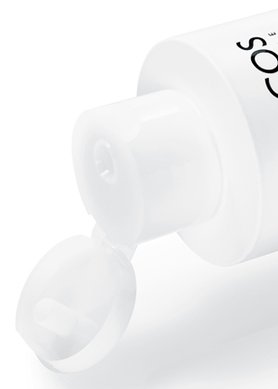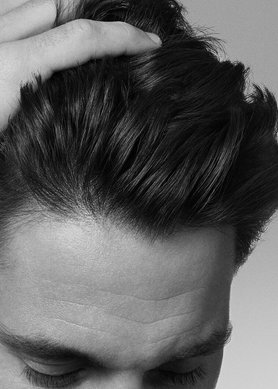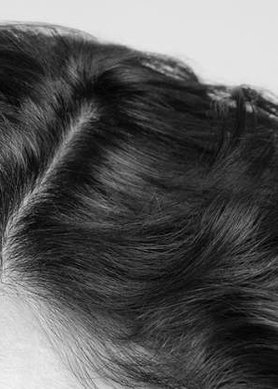You can expect a certain amount of hair fall each day; this is a natural phase in the hair life cycle to make way for new growth.
But how much hair fall is normal?
Between genetics, lifestyle factors, and external stressors, there are myriad factors that can influence the rate at which your hair sheds. But it’s important to keep track of your hair fall patterns to find out if there’s an underlying concern at play.
In this definitive guide, we’ll cover how much hair fall is normal – and when you might need to intervene.
What are the four stages of hair growth?
Each hair on your head operates on its own independent life cycle. So, to determine how much hair fall is normal, we’ll first need to unpack the four stages of the hair growth cycle.
- Anagen phase: Hairs in this phase are actively growing. Spanning between three to five years, this is the longest phase of the hair cycle.
- Catagen phase:Catagen hairs are in a transition period between growth and resting phases. The catagen phase lasts approximately two weeks.
- Telogen phase: When hairs enter the telogen phase, this marks a three to four-month period of rest.
- Exogen phase: The very end of a hair’s life cycle is the exogen (shedding) phase. A hair sheds from the follicle and is replaced by a new shaft1.
How much hair fall is normal per day?
The typical amount of hair fall per day is between 50 to 100 hairs2. While this might seem like a lot, the average human has anywhere between 80,000 to 120,000 hairs on their scalp3. And remember, each hair is on its own hair growth cycle.
Some days you may feel that you are experiencing more hair fall than normal, but there are plenty of factors that could explain this – and it isn’t always cause for alarm.
When does hair normally shed?
If you are trying to gauge how much hair fall is normal for you, there are several instances where you can get an up-close look at your hair shedding:
- The shower: You’ve probably noticed that the bulk of your hair fall happens in the shower – specifically when shampooing. This is because washing your hair naturally loosens the exogen hairs that were going to shed. When you see them all collected at once, though, it can seem like a lot!
- Brushing or combing: Similar to washing your hair, brushing and combing will remove any hairs that have already shed from their follicle. However, being too rough with your strands can also cause unnecessary breakage.
- On your pillow or clothes: Exogen hairs can naturally shed while you’re sleeping – or simply going about your day. The amount of hair on your pillow or clothes can be another helpful indicator of your daily hair fall.
Why am I shedding more hair than normal?
Once you have a barometer for how much hair fall is normal, you should be able to identify if you are shedding more than usual. This is the first part of the equation.
The next? Understanding what causes hair fall. Let’s dive in.
- Stress levels:Chronic stress causes a flood of corticosterone (the stress hormone) in the body, which can trigger increased hair fall4.
- Diet: Nutrient deficiencies can weaken hair follicles and impact your hair’s natural growth cycle, causing hairs to prematurely shed.
- Age and genetics: Loss of hair density and genetic hair fall are common as we age. In fact, hair fall of some kind affects up to 50% of men and women in their lifetime5.
- Hair breakage: Chemical treatments, excessive heat styling and rough handling of your strands can all contribute to breakage – making it seem like you are shedding more than normal.
- Other health concerns: Your overall health plays a significant role in the function of hair growth. In this case, you may need to reach out to a medical practitioner.
What can I do if I am seeing more hair fall than normal?
You can take the necessary steps to manage excess shedding. Below are some of our expert tips to get you started:
- Switch to an anti-hair fall shampoo and conditioner to target your specific hair concern. This will help fortify strands and curb unnecessary breakage. For this, we recommend the Dercos Energy+ Stimulating Shampoo and the Dercos Energy+ Fortifying Conditioner.
- An anti-hair fall serum can also support your other hair care products. Enriched with aminexil (a key anti-hair fall ingredient), Dercos Aminexil Pro 5 is designed specifically for scalps prone to hair fall linked to stress and fatigue.
- If you suspect that your increased hair fall might be due to breakage, you can take a break from heat styling and chemical processing to help prevent hair breakage.
- Eat a well-rounded diet and increase your intake of protein, iron, and vitamin-rich foods to support hair growth.
- Be sure to pepper your hair care routine with fortifying ingredients like vitamin E and ceramides which can help strengthen the hair fibres and encourage new growth.
Now that you know how much hair fall is normal, you can adjust your hair care routine to align with your needs. Next, we unpack hair fall in women and how to manage it.
1https://pmc.ncbi.nlm.nih.gov/articles/PMC9917549/
2https://www.aad.org/public/diseases/hair-loss/insider/shedding
3https://www.ncbi.nlm.nih.gov/books/NBK513312/
4https://www.nih.gov/news-events/nih-research-matters/how-stress-causes-hair-loss
5https://www.ncbi.nlm.nih.gov/books/NBK430924/






